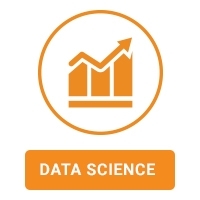Data Science
Impactful Data – Developing Dashboards That Both Inform and Inspire
By Maria Wasley-Valdez | June 03, 2021

Editor's Note: This article is featured in Best of Connections 2021. Read Apra Editorial Advisory Committee Chair Jessica Balsam's editor's message to learn more about the top articles of the year.
Dashboard reports and self-service tools can be very beneficial for research and advancement shops. They save time by giving end users access to the metrics they need, help keep departments on track and give fundraisers valuable feedback on activities. But tables with numbers do not an effective dashboard make. Over the years of developing dashboards and self-reporting tools, I have learned many valuable lessons about what makes a dashboard both informative and impactful for fundraisers and leadership.
Our journey into the world of dashboard reporting started humbly. It began with a manually created dashboard which consisted of tiny numbers aggregated into one big table. We printed copies to review at monthly development meetings, then discussed progress on key metrics such as visits with donors, number of asks made and dollars raised. While those first dashboard iterations were informative, I knew we were missing out on giving our fundraisers tools they could use to track their own progress as needed, inspire action and inform strategy. Not to mention, putting together these dashboard reports was time consuming, static and simply not insightful.
Most importantly, however, these dashboards failed to answer the “what” and the “why,” which I have found to be the key to impactful reporting. Dashboards should be more than just a report of current numbers. The dashboard should be used as both a tracker and a tool to help inform strategy, improve performance or evaluate effectiveness. Here are some of the other lessons I have learned throughout our process:
1. Identify your “must have” metrics.
What are the metrics you must track in your dashboard? Talk with leadership and your development officers about the numbers they need most, what actions they take in response with those numbers and what information is a priority. Align your metrics to the needs of your users and institution. These will change over time so plan to reevaluate every year or so to keep your dashboards relevant and useful.
2. Take inventory of commonly asked questions.
Other than the key metrics your organization tracks, what are some other commonly asked questions or other things you are regularly asked to report on? Consider including a graph or chart that will answer these things. Dashboards can be multipurpose and can save you time on creating reports down the road.
3. Keep it simple.
What is the easiest way you can report on your metrics? Streamline how you create your dashboards so they are easy to maintain, refresh and replicate if needed. Keep graphs and charts simple and visually easy to digest.
4. Make them accessible and on-demand.
Determine if and how you can make the dashboards self-serve and on-demand for your development officers. Depending on your technology resources and database configuration this may or may not be possible, but regular dashboards with up-to-date data is key. If on-demand access is not possible, see if you can get the dashboard emailed once a week. Automation and self-service will save you and your shop valuable time as well.
5. Answer the question: “What is this telling us?”
Your dashboards should be self-explanatory and inform both the “what” and the “why.” They should help the user to know what the data is and what it means. Use descriptive titles or brief explanations along with each graph or chart. Remember who your audience is and cater your graphs to what they need to know.
6. Inspire a call to action.
Your dashboards should make an impact and help inform next steps. Is there a time of year that fundraisers are most successful? Is there a certain appeal that seems to do better than others? Are there bottlenecks happening in your pipeline? Remember, something that may be interesting and insightful to you as the analyst may not be at all useful to your user.
7. Solicit feedback from your users.
Gather feedback from those that are using the dashboard. Are the graphs and charts easily understandable? Does it adequately address their data or performance questions? Do they find them useful as a tool? Strive to constantly improve and fine tune your dashboards. Your dashboards should always be evolving, especially as the priorities and strategies of your organization change.
Dashboards can be daunting at first and can also be approached in a myriad of ways. Whatever tools you have at your disposal, start small and work with your fundraisers and leadership to make something both informative and useful.

This article relates to the Data Science domain in the Apra Body of Knowledge.
Learn more about the author featured in this article on the Connections Thought Leaders Page.

Maria Wasley-Valdez
Assistant Director of Prospect Development, Texas State University
Maria Wasley-Valdez is the assistant director of prospect development at Texas State University where she also earned her master’s in sociology. She has worked in prospect research and analytics for seven years and is a self-proclaimed data nerd. Prior to her role at Texas State, she worked at the Texas Association Against Sexual Assault and served on the board for a local GLBTQIA+ scholarship fund. When she is not building out Tableau dashboards or diving into a data project, she can be found hanging out with her four cats, two dogs and one wife in the hill country of central Texas.